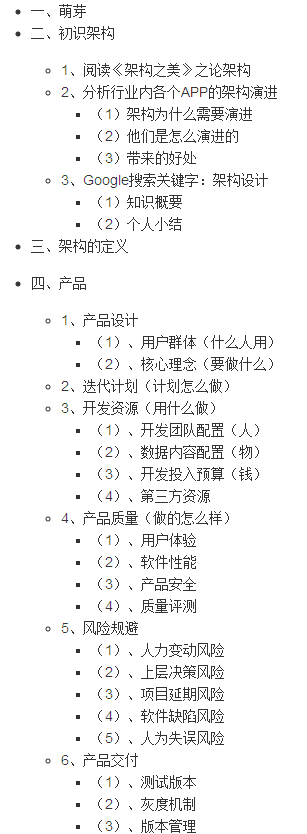I'm trying to run sendmailR on Windows with the following code:
## Not run:
from <- "<tal.galili@gmail.com>" # sprintf("<sendmailR@\\%s>", Sys.info()[4])
to <- "<tal.galili@gmail.com>"
subject <- "Hello from R"
body <- list("It works!", mime_part(iris))
sendmail(from, to, subject, body,
control=list(smtpServer="ASPMX.L.GOOGLE.COM."))
And get the following error:
Error in socketConnection(host = server, port = port, blocking = TRUE) :
cannot open the connection
In addition: Warning message:
In socketConnection(host = server, port = port, blocking = TRUE) :
smtp.gmail.com tal.galili@gmail.com:statisfun:25 cannot be opened
The answer here give a solution for Linux, and I would be grateful for advice for Windows users.
Thanks.
You could give the new mailR package a shot: http://cran.r-project.org/web/packages/mailR/index.html
The following call should then work:
send.mail(from = "tal.galili@gmail.com",
to = "tal.galili@gmail.com",
subject = "Subject of the email",
body = "Body of the email",
smtp = list(host.name = "smtp.gmail.com", port = 465, user.name = "tal.galili", passwd = "PASSWORD", ssl = TRUE),
authenticate = TRUE,
send = TRUE)
I used to send emails via R using these lines.
Suppose your email is tal.galili@gmail.com using window OS (my operation system)
library(sendmailR)
# 1 case
from <- sprintf("<sendmailR@%s>", Sys.info()[4])
to <- "<tal.galili@gmail.com>"
subject <- "Hello from R"
msg <- "my first email"
sendmail(from, to, subject, msg,control=list(smtpServer="ASPMX.L.GOOGLE.COM"))
# 2 case
from <- sprintf("<tal.galili@gmail.com>", Sys.info()[4])
to <- "<tal.galili@gmail.com>"
subject <- "Hello from R"
msg <- "my first email"
sendmail(from, to, subject, msg,control=list(smtpServer="ASPMX.L.GOOGLE.COM"))
As an alternative to using sendmailR you might try this:
Parse together a VB-Script (see e.g. http://www.paulsadowski.com/wsh/cdo.htm ) and then call it via shell.
This might look like this:
SendMail <- function(from="me@my-server.de",to="me@my-server.de",text="Hallo",subject="Sag Hallo",smtp="smtp.my.server.de",user="me.myself.and.i",pw="123"){
require(stringr)
part1 <- "Const cdoSendUsingPickup = 1 'Send message using the local SMTP service pickup directory.
Const cdoSendUsingPort = 2 'Send the message using the network (SMTP over the network).
Const cdoAnonymous = 0 'Do not authenticate
Const cdoBasic = 1 'basic (clear-text) authentication
Const cdoNTLM = 2 'NTLM "
part2 <- paste(paste("Set objMessage = CreateObject(",'"',"CDO.Message",'"',")" ,sep=""),
paste("objMessage.Subject = ",'"',subject,'"',sep=""),
paste("objMessage.From = ",'"',from,'"',sep=""),
paste("objMessage.To = ",'"',to,'"',sep=""),
paste("objMessage.TextBody = ",'"',text,'"',sep=""),
sep="\n")
part3 <- paste(
"'==This section provides the configuration information for the remote SMTP server.
objMessage.Configuration.Fields.Item _
(\"http://schemas.microsoft.com/cdo/configuration/sendusing\") = 2
'Name or IP of Remote SMTP Server
objMessage.Configuration.Fields.Item _
(\"http://schemas.microsoft.com/cdo/configuration/smtpserver\") = ",'"',smtp,'"',"
'Type of authentication, NONE, Basic (Base64 encoded), NTLM
objMessage.Configuration.Fields.Item _
(\"http://schemas.microsoft.com/cdo/configuration/smtpauthenticate\") = cdoBasic
'Your UserID on the SMTP server
objMessage.Configuration.Fields.Item _
(\"http://schemas.microsoft.com/cdo/configuration/sendusername\") = ",'"',user,'"',"
'Your password on the SMTP server
objMessage.Configuration.Fields.Item _
(\"http://schemas.microsoft.com/cdo/configuration/sendpassword\") = ",'"',pw,'"', "
'Server port (typically 25)
objMessage.Configuration.Fields.Item _
(\"http://schemas.microsoft.com/cdo/configuration/smtpserverport\") = 25
'Use SSL for the connection (False or True)
objMessage.Configuration.Fields.Item _
(\"http://schemas.microsoft.com/cdo/configuration/smtpusessl\") = False
'Connection Timeout in seconds (the maximum time CDO will try to establish a connection to the SMTP server)
objMessage.Configuration.Fields.Item _
(\"http://schemas.microsoft.com/cdo/configuration/smtpconnectiontimeout\") = 60
objMessage.Configuration.Fields.Update
'==End remote SMTP server configuration section==
objMessage.Send
",sep="")
vbsscript <- paste(part1,part2,part3,sep="\n\n\n")
str_split(vbsscript,"\n")
writeLines(vbsscript, "sendmail.vbs")
shell("sendmail.vbs")
unlink("sendmail.vbs")
}
... and use it like this:
SendMail(
from="me.myself@andI.com",
to="whatsup@man.com",
text="Hallo",
subject="readThis",
smtp="smtp.andI.com",
user="me.myself@andI.com",
pw="123456"
)
Any time that sendmailR fails to authenticate, one gets the not so helpful message that
Error in if (code == lcode) { : argument is of length zero
This can be for many reasons, including server side reasons. In my case, I needed to put my IP on the server's whitelist. @alko989 declares at issue using sendemailR that authentication ... is not supported by sendmailR, and as of the 2015-Feb-20 publishing of sendmailR https://cran.r-project.org/web/packages/sendmailR/sendmailR.pdf, the only control parameters are smtpServer, smtpPort & verbose, so nothing for user, password, ssl, tls, etc. Mail servers today tend to be much more secure than the mail servers of the past, so that's a serious limitation of sendmailR.



